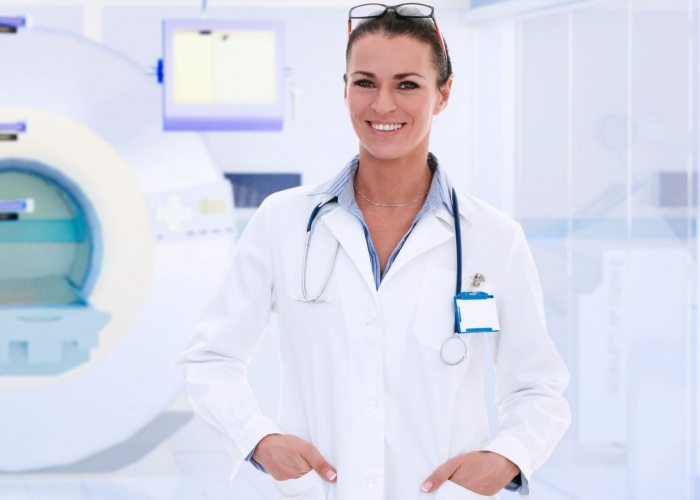Inner ear + cranium MRI examination
An inner ear MRI scan is essentially used to detect the cause of sensorineural hearing loss. An MRI scan can help diagnose nerve sheath tumours, cerebellopontine angle tumours, cysts, and other lesions in the inner ear.
MRI is an imaging diagnostic procedure that uses magnetic field to take detailed images of the human body.
The magnetic field generated by the device converts the energy changes in the body into a high-resolution, three-dimensional image by a high-performance computer. At Medicover Diagnostic Center, we use equipment that works with a closed but extremely short tube. It is 10 centimetres wider than average and its diameter is 70 cm, thus helping reduce the feeling of confinement.

What types of diseases does the inner ear + cranium MRI scan help diagnose?
An inner ear MRI scan can diagnose inflammation, tumours, and other soft tissue lesions. Your doctor may request an examination if you have the following conditions:
nerve sheath tumour
cerebellopontine angle tumour
cyst
In case of which symptoms is it recommended to perform the examination?
Your doctor may consider a scan if you experience ringing in the ears, dizziness and hearing loss.
How to prepare for the inner ear + cranium MRI examination?
In all cases, it is recommended to consult the treating physician about the details, although the native examination does not require special preparation.
On the other hand, it is important to know that due to the strong magnetic field, it is forbidden to bring a metal device or object containing metal into the examination room! This applies to jewellery, piercings in the body, and some makeup products may contain a substance that affects the success of the scan.
Prior to an examination with contrast agent, specialist consultation is essential. Kidney function laboratory results showing creatinine and urea values are also required to perform this type of examination. In the case of a scan with contrast agent, you should not eat for 6 hours beforehand.
How is the inner ear MRI scan performed?
Following the pre-inner ear MRI orientation, the operator will see you into the MRI examination room and then ask you to sit on the examination bed. The operator adjusts the correct body position, places the coils required for the test, and then the examination bed lifts you into the magnetic tube. It is important to remain still during the test, you can only change your body position on the instructions of the operator. The examination takes an average of 30 minutes, while you can communicate with our colleague continuously through the built-in microphone and speaker. The machine makes a loud, rattling sound that can be reduced with earplugs.

When can an inner ear MRI scan not be performed?
The examination cannot be performed in the first trimester of pregnancy.
The examination cannot be performed if you do not have an MRI compatible metal, implant, prosthesis (pacemaker), orthopaedic metal (screw, plate, nail, wire), implanted joint prosthesis, prosthetic limb, implanted defibrillator, neurostimulator, implanted drug dispenser, vascular implants (e.g. clips, vascular occlusion devices), ear implants, metal foreign body (e.g. bullet, splinter, other electronic implants). Therefore, in case of an implant, implanted metal, prosthesis, please bring a written certificate of its compatibility with MRI examination (certified by the implanting specialist, institution) for the examination itself, which clearly states: the suitability to enter the MRI examination room, to perform the MRI examination and marking the maximum magnetic field strength (1.5 Tesla, 3 Tesla) for the device or implant. Inform the person performing the examination about the implant beforehand.
If the subject weighs more than 200 kilograms, but it also depends on the circumference of the abdomen.
In case of a scan with contrast agent, if the eGFR of the kidney function is below 45 ml/min, the test is not performed.
What to expect after the test?
The finding in itself is not a diagnosis. After the examination, please always consult a specialist with the result.
The contrast agent used for MRI examination is gadolinium-based. In rare cases, hypersensitivity may occur, in the form of an allergic reaction immediately after the administration of the contrast agent.
When is the result of the inner ear MR examination expected?
The completed scan will be reviewed by the radiologist and the result will be available in our online system after 5 working days.


